

Cabs are the Japanese language test for foreigners!”
Cabs are very convenient in places where public transportation is not available or when you have a lot of luggage. Cabs can be considered one of the main modes of transportation in Japan.
In fact, however, cabs are a very difficult vehicle for foreigners.
So in this article, I will explain the following:
・Interview with foreigners about why they can’t take a cab
・Recommended cab apps that are easy for foreigners to use
・Suggested sightseeing plans using cabs
These include
You can learn about cab apps, sightseeing tours, and conversation topics that will please foreigners. You can learn all about taxi apps, sightseeing tours, and conversation topics that will make foreigners happy. Please take a look at it until the end.
What about cab service for foreigners?
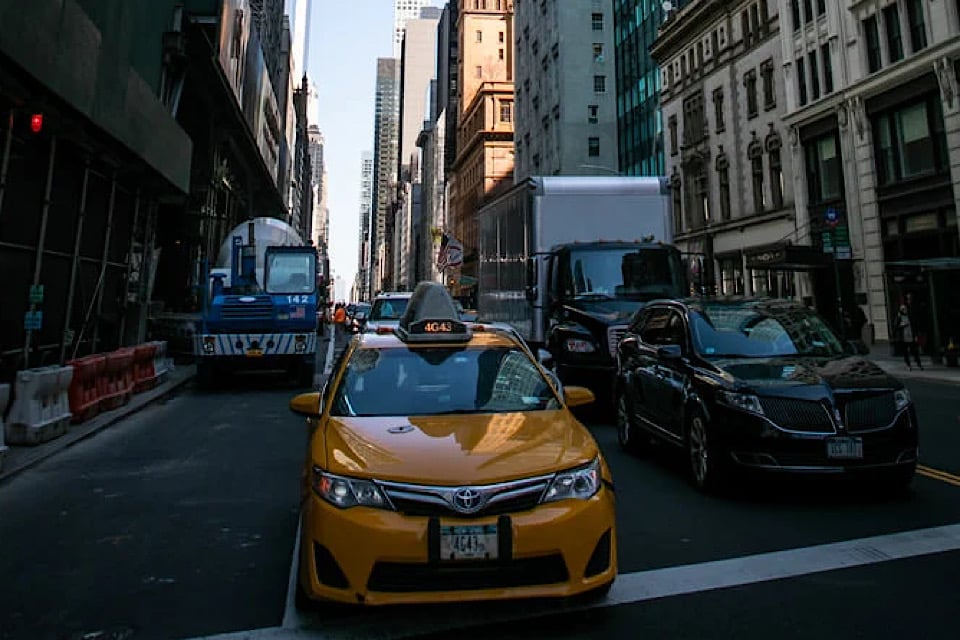
Cabs are a very convenient means of transportation for foreigners traveling in Japan.
Subway and bus routes are complicated, and sometimes destinations and stations are far apart, but cabs are very convenient because they can take you directly to your destination.
Today, cab apps such as “GO,” “DiDi,” “Uber Taxi,” and “S.RIDE” have appeared on the market, Multilingual support, integration with overseas transportation apps, and cashless payment The ease of use of cabs has improved dramatically with the introduction of multilingual support, integration with overseas transportation apps, cashless payment, and other features.
Uber Taxi,” in particular, has been updated to make it easier for foreign visitors to Japan to use, further increasing convenience.
At first glance, Japanese cabs seem to have become very convenient, but many foreigners who actually use them still find various hurdles. Let’s take a look at some of the challenges that foreigners feel when using cabs in Japan.
What are some of the problems foreigners have with cabs? [Interviews about their experiences]
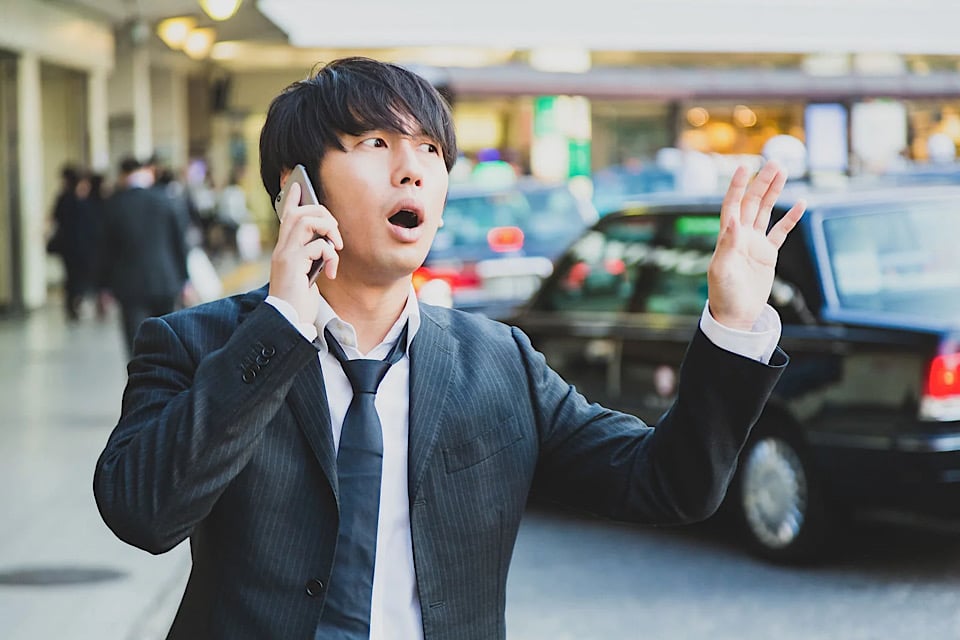
Cabs are a familiar means of transportation, widely used throughout the world.
However, foreigners often find it difficult to use cabs in Japan.
So, we interviewed Mr. D, a foreigner who has lived in Japan for 3 years and works for a Japanese trading company. Mr. D, a foreigner who has lived in Japan for three years and works for a Japanese trading company, told us about the difficulties he has had with cabs in Japan.

My name is D.
I came to Japan 3 years ago after traveling around Europe, Southeast Asia, and Australia for work.
I am currently working for a Japanese trading company and often use cabs for my work.
However, each time I do, I have felt that Japanese cabs are difficult to use.
Today, I would like to tell you why Japanese cabs are so difficult for foreigners to use.
Riding in a cab is like taking a Japanese language test

Mr. D felt the biggest obstacle when taking a cab in Japan The biggest obstacle was the “Japanese language barrier was “the Japanese language barrier.
When taking a cab, many language barriers stand in the way, such as telling the driver exactly where you are going, understanding what the driver is saying, and in some cases canceling or changing reservations.
In the past, they have experienced cancellations of reservations because they could not properly communicate where they wanted to go in Japanese, and they have also experienced problems because they could not communicate the difference in stop locations.

I can speak Japanese to the extent that it does not interfere with my daily life or work.
Even so, I sometimes feel a Japanese language barrier when I take a cab.
This is true even for me who can speak Japanese, I wonder how high the hurdle must be for foreigners who cannot speak Japanese.
Concerned about fees.

Besides the language barrier, Mr. D has other reasons to be concerned about using cabs in Japan.
That is, It is difficult to understand the fare structure.
apps such as Uber clearly indicate the fare based on the distance in advance, but when taking a cab in Japan, it is sometimes difficult to know the total fare it will cost to reach the destination.
This can lead to concerns such as, “Will the driver intentionally make a detour and increase the fare?

Sometimes it is difficult to know how to pay.
When riding in a “private cab,” credit cards may not be accepted, and depending on the cab, electronic money and app payments may or may not be accepted, making it very confusing.
It would be much easier to understand if all cabs had a unified payment method. Please contact …… for more information.
Why I Still Want to Use a Taxi: Everyday Life
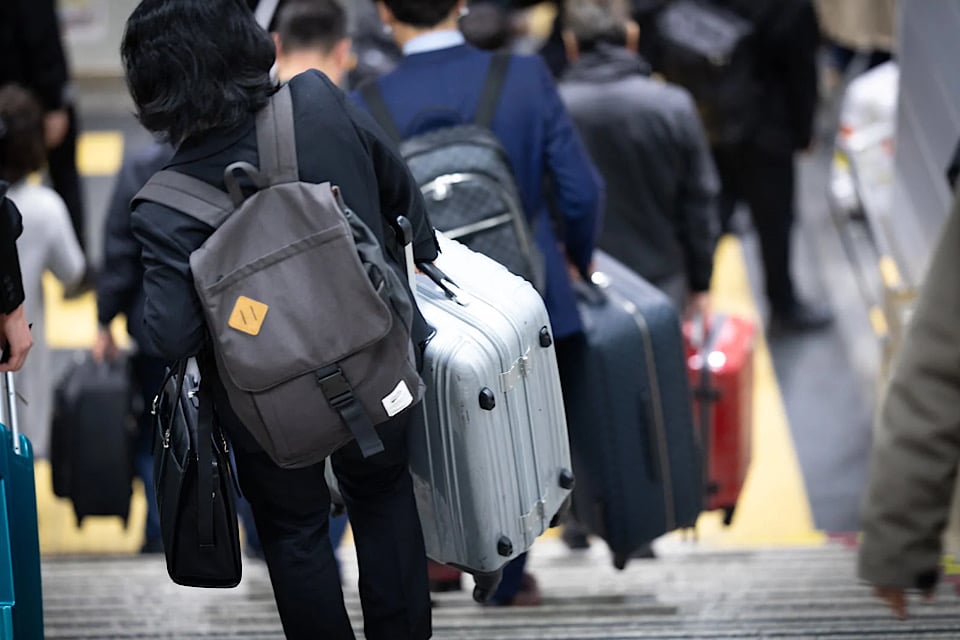
Although Mr. D feels that Japanese cabs are difficult to use, he does not want to stop using them.
Rather, he would rather use taxis when entertaining clients at work, when the destination is far from the station, when he has a lot of luggage, or when traveling to a rural area where public transportation is not well-developed, There are many situations in which he would like to use a cab. There are many situations in which you would like to use a taxi.

For foreigners who are not accustomed to public transportation in Japan, there are many situations in which they would like to use cabs.
If only there were no Japanese language barriers or concerns about the fare structure, I would use them more on a daily basis. I feel that …… is a good place to start.
When foreigners want to use a cab: Travel
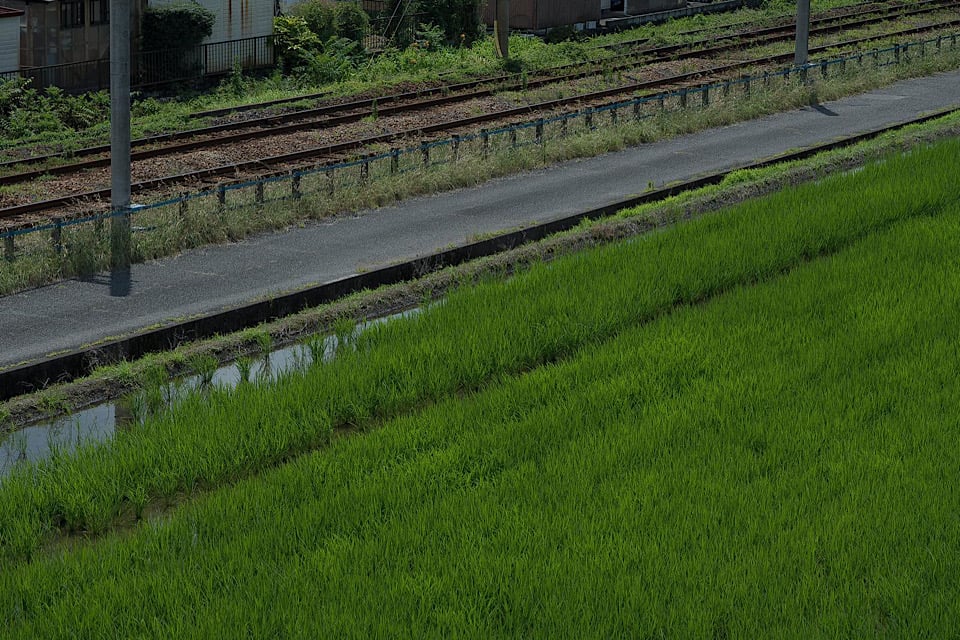
Mr. D told us earlier that there are many situations in his daily life where he would like to use a cab.
So, in what situations do you feel you would like to use a cab for sightseeing?
We asked Mr. D, who has traveled to 14 prefectures during his three years in Japan, about Scenes in which I would like to use a cab while traveling We asked him to choose three “scenes in which he would like to use a taxi during his travels.
When traveling in a rural area
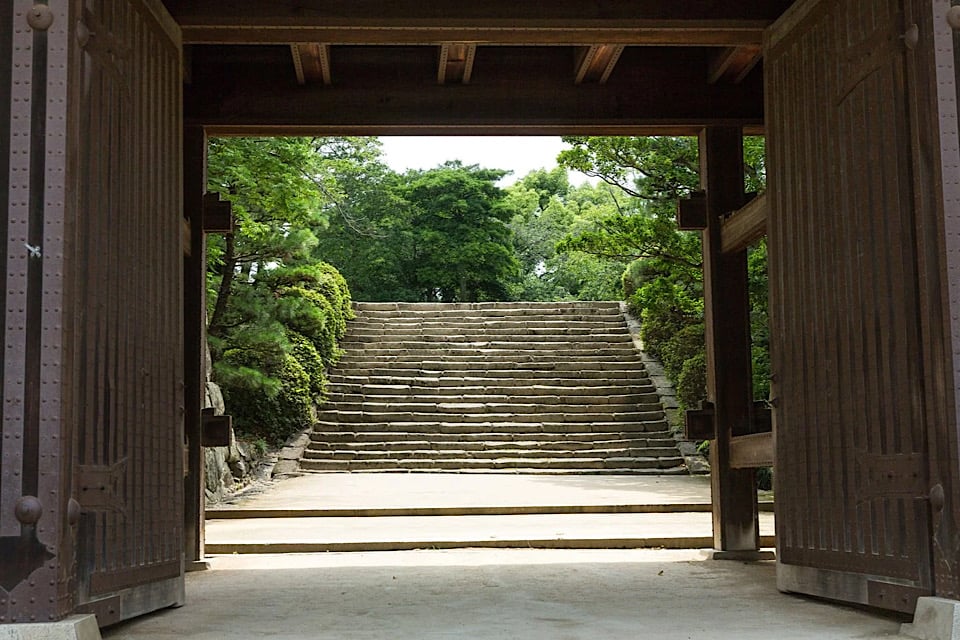
Mr. D visited Kagoshima Prefecture on his honeymoon. However, there were no trains going near their destination, and the buses were out of service.
He was at a loss as he did not know how to get there as it wasnot far enough to reach on foot.
In many rural areas, public transportation is scarce, and many areas are designed to be traveled by car. Therefore, they feel that they would prefer to use cabs when traveling in these locations.
When you want to visit many tourist attractions

When Mr. D traveled to Kyoto, he wanted to visit both Kiyomizu-dera Temple and Hachiman Shrine.
The two spots are approximately 25 minutes apart on foot, and while not an impossible distance to walk, it is a bit troublesome…….
At that time, she felt that it would be easier if she could take a cab.
He has visited many tourist destinations in local cities and says that while the sights in all of them are relatively close together, they are often somewhat far apart and inconvenient to walk to.
Certainly, I would be tempted to take a cab in those situations.
When you want to entertain VIPs
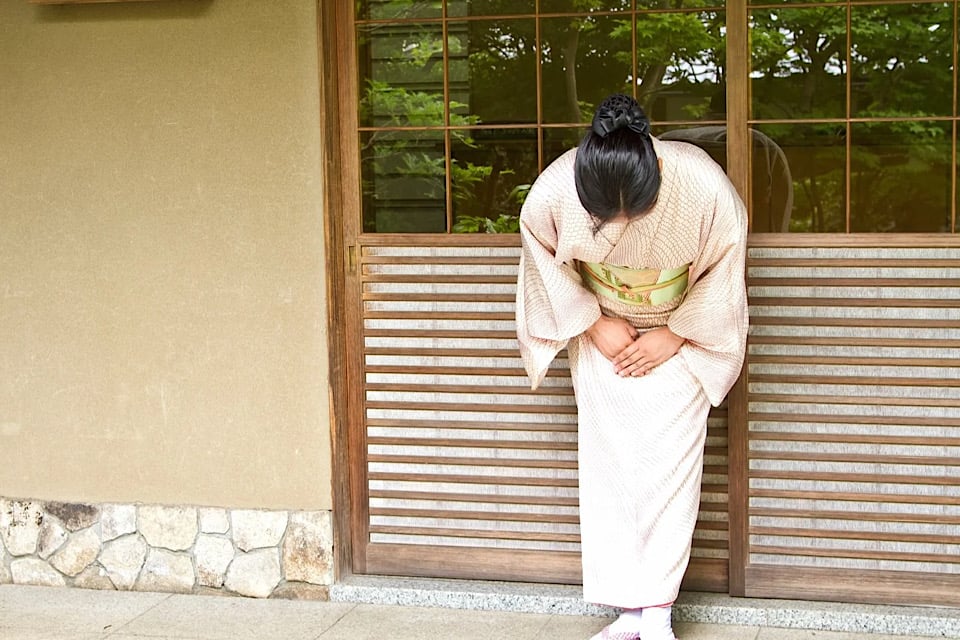
When entertaining important guests visiting Japan, traveling on foot can be tiring.
In addition, public transportation is crowded and transfers are complicated, making smooth travel difficult in some situations.
In such situations, they found it convenient to take a cab, which can get them to their destination comfortably and reliably from the comfort of their seat.
As you can see, getting around in Japan can be surprisingly difficult for foreign visitors.
If you feel that you want to enjoy sightseeing more easily or want to know more about sightseeing plans that are easy to move around, please refer to Motenas Japan’s past articles.
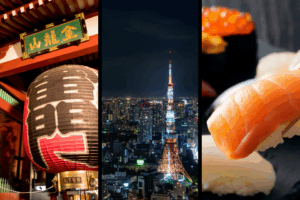

From what you have told us, there are so many situations in which foreigners feel they would like to use cabs.
I felt that it would be nice to see more convenient cab services expand in response to the demand.
Thank you for sharing your valuable story.

Thank you for taking the time to speak with us as well.
We have been at …… for a year now, A useful app that solves these problems that solves these problems.
Latest Version] Recommendations for Foreigners! Useful Taxi Apps
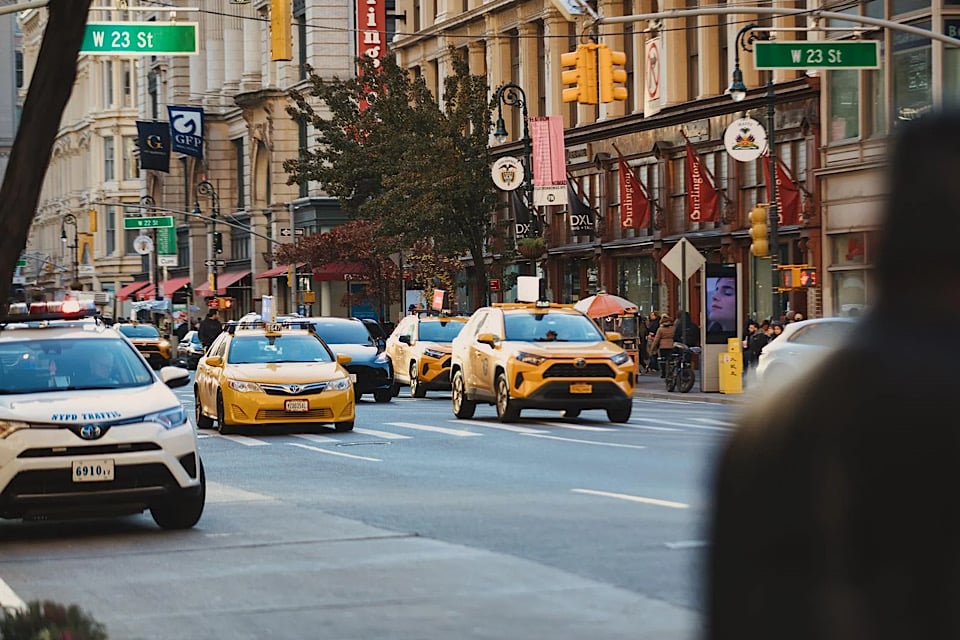
In fact, Mr. D has been using the app for a year now to make all of his dispatch arrangements, instead of picking up a cab on the street or calling a cab company to make a reservation.
In this issue, we asked Mr. D to tell us about three useful cab apps that he would recommend to foreigners.
Uber Taxi
Uber Taxi is the world’s most commonly used vehicle dispatch service app. You can easily call a driver with the smartphone app and check the fare and route in advance. It is multilingual, easy to use for foreigners, and supports cashless payment.
You can also check the dispatch status and arrival time in real time, and evaluate your ride after you get in. It is popular as a convenient and reliable service.
Name: Uber Taxi
Download location: App Store (iOS), Google Play (Android)
Fees: The app is free to download.
Fees vary depending on distance and time of use and can be confirmed in advance on the app.
Payment methods: Credit cards, debit cards, PayPal, and other cashless payment methods are supported. Cash is not accepted in principle.
Registration: After downloading the app, create an account by entering your email address and phone number.
Register your payment information and start using the service.
Rating: ★About 4.5 (average rating on App Store and Google Play).
*Information as of June 2025

Mr. D’s Recommendations】
① Multilingual support that is easy to use even for foreigners who are not good at Japanese.
(2) Easy to specify the location of boarding and alighting points on the map, making it difficult to get lost.
(3) Smooth and secure payment with a full range of cashless payment options.
I have used the system both in Japan and overseas without any problems.
GO
The “GO” application is linked to major Japanese cab companies and can be used anywhere in Japan.
It is designed to be easy to use for foreigners as it is multilingual. You can easily specify the location of your ride and drop-off point on the map.
Cashless payment is also supported for smooth payment.
Furthermore, cab locations can be checked in real time and dispatched quickly.
Name: GO (Go)
Download location: App Store (iOS), Google Play (Android)
Fee: The app is free to download.
Fees for use vary depending on distance and time, and can be confirmed in the app in advance.
Payment methods: Credit cards, transportation IC cards, electronic money, and cashless payment are supported.
Cash payment may also be accepted.
How to register: After downloading the app, enter your phone number and e-mail address to create an account. Register your payment method and you can use the service immediately.
Rating: ★About 4.3-4.5 (average rating on App Store and Google Play).
*Information as of June 2025

D’s Recommendations】
① Multilingual support that is easy to use even for foreigners who are not good at Japanese.
(2) Easy to specify the location of boarding and alighting points on the map, making it difficult to get lost.
(3) Smooth and secure payment with cashless payment system.
DiDi
DiDi is a multilingual, easy-to-use cab dispatch application for foreigners.
There are no pick-up fees or surcharges, and the fees are clear and reliable.
Payment can be made by credit card, electronic money, or other cashless payment methods.
The service is highly rated by users, and a comfortable ride can be expected. In addition, the service is widely available and convenient mainly in urban areas.
Name: DiDi
Download location: App Store (iOS), Google Play (Android)
Fee: Free to download app.
No pick-up fee. Fees can be confirmed in advance on the app with a clear fee structure based on distance and time.
Payment method: Cashless payment by credit card, traffic IC card, electronic money, etc.
Registration : Enter your phone number or e-mail address, and complete registration with SMS or e-mail verification. Register payment information on the application.
Evaluation: The application is popular for its multilingual support, ease of use, and easy-to-understand fees. The quality of service is also high, and users give it high marks.
*Information as of June 2025

D’s Recommendations】
① Multilingual support that is easy to use even for foreigners who are not good at Japanese.
(2) Easy to specify the location of boarding and alighting points on the map, making it difficult to get lost.
(iii) Smooth and secure payment with a full range of cashless payment options.
Mr. D says that since he started using these apps, he is able to get around more smoothly than before.
If you find that someone from overseas is having trouble using a cab, please tell him or her about these apps.
It will surely make their travel much easier.

Thank you, Mr. D, for all your help!
I want to show Japan to foreign tourists using cabs! But I don’t know what kind of Japanese culture would please them…”
If so, please refer to Motenas Japan’s past articles.


What do I need to get a smooth ride in a cab?
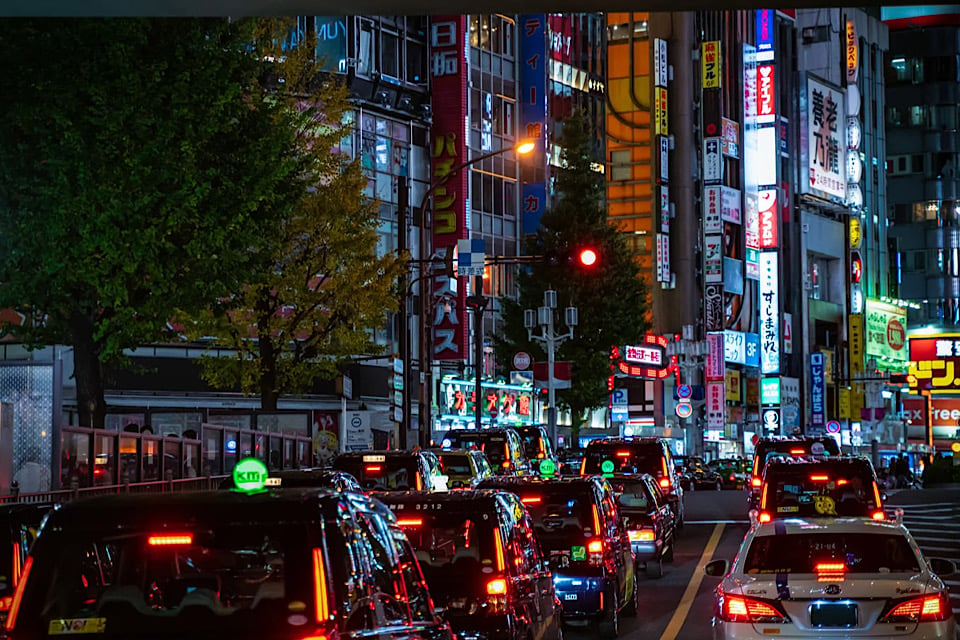
What can we do to make cab rides smoother for foreign tourists?
Here we introduce three “Omotenashi techniques” that are useful not only for sightseeing but also for business.
Know the number of people and their luggage in advance
Since there is a limit to the number of people that can ride in a cab, if you do not know the exact number of passengers, you may find yourself in a situation where “only one person is traveling in a separate cab,” which may cause anxiety for your companion.
Therefore, be sure to confirm the number of passengers and the amount of luggage in advance.
In addition, Uber Taxi XL allows up to 6 people to ride together, which is very convenient when you need to transport a large group at once.
We want to move a lot of customers for you.
Uber Taxi XL Official Website
Pre-assigning cars
Especially for customers who do not speak Japanese, not knowing where to find a taxi dispatch can be a source of great anxiety.
In such cases, we recommend the use of cab apps such as Uber Taxi.
These apps not only allow you to specify the location of your ride on a map, but also display the make and color of the car that will be dispatched to you, so you can rest assured that you will not make a mistake.
This is a very reassuring tool for customers with language barriers, as it allows for a smooth cab ride.
Arrangement of private cab
If you want to reduce the stress of transportation to as little as possible, arranging a private cab is the way to go.
The advantage of a dedicated cab is, first of all, the peace of mind that you will be picked up at a fixed location.
Since it is arranged only for that person, there is no need to worry about being left behind.
Also, since reservations can be made on a daily basis, you can smoothly tour the sights or move from sightseeing spots to restaurants.
The ability to move at one’s own pace makes it possible to enjoy a comfortable trip without being tied down by time.
This is a very reassuring means of transportation, especially for those who are worried about language barriers or unfamiliarity with the area.
Thus, in order to facilitate the transportation of foreign guests, it is important to understand the type of cab suitable for them. Therefore, the following are the types of cabs that are especially suited for foreign visitors.
Types of Taxis for Foreigners
There are several types of cabs suitable for foreigners.
When making arrangements in advance, it is good to remember to specify the type of car you want to use so that you can travel more comfortably.
One-box type
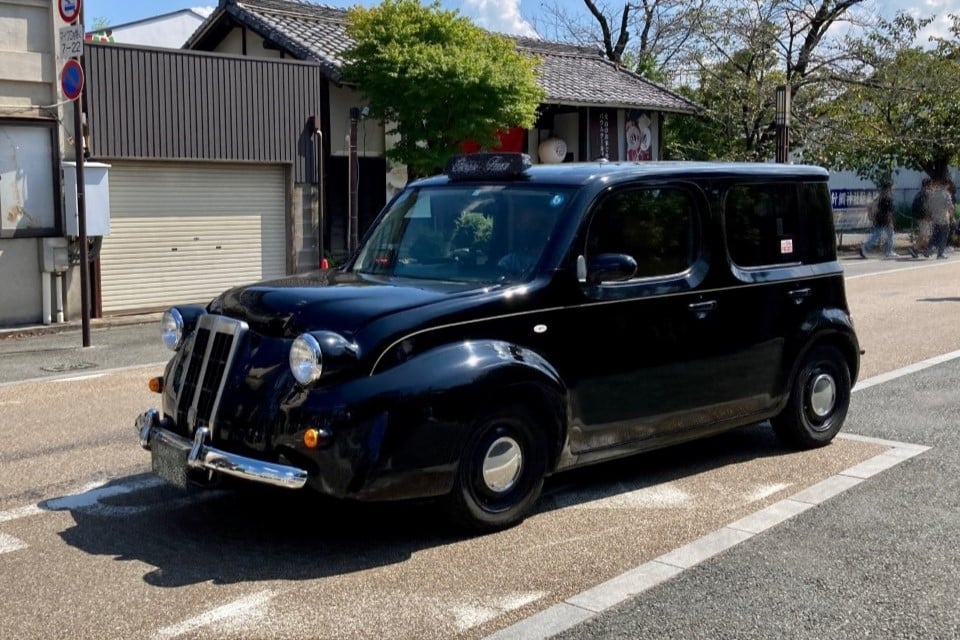
Cabs especially recommended for foreigners are one-box type vehicles. Specifically, this applies to vehicles such as the Alphard and Hiace, which have been modified for cab use.
One of the reasons we recommend this is that foreigners tend to have a lot of luggage. Since many foreigners stay in Japan for a long period of time, they tend to have a lot of belongings. Therefore, a one-box type cab is suitable for them, as it can carry enough luggage.
It is also not uncommon for family units to travel together, for example, a family of four may have more than four suitcases. Since a single regular cab may not be able to carry all the luggage, we recommend that you confirm the number of luggage items in advance when arranging a cab.
Japan Taxi (JPN TAXI)
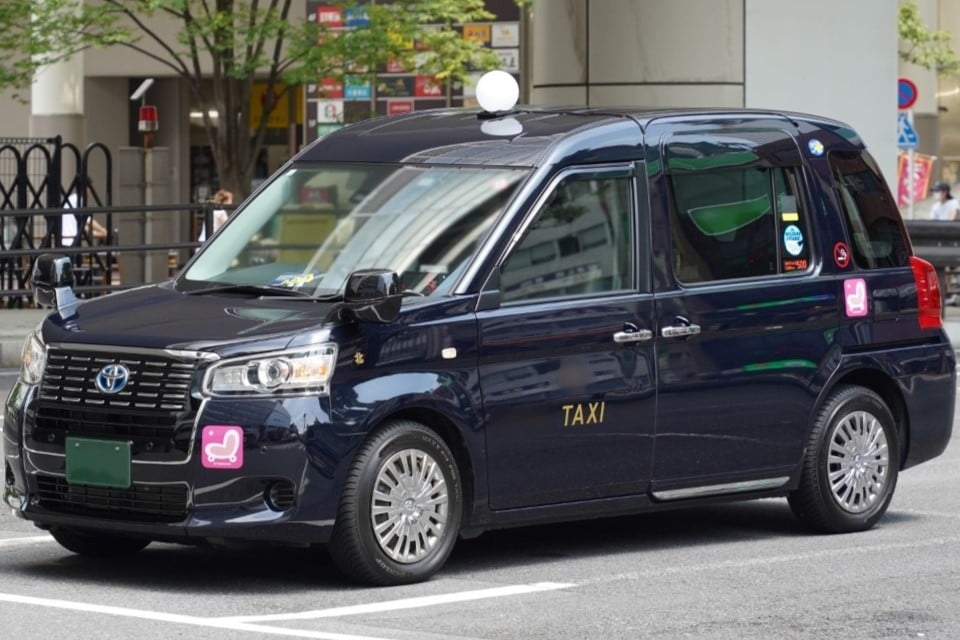
Japan Taxi is a new cab model developed by Toyota to accommodate the increasing number of foreigners. It is based on the Sienta and has been modified to be taller and carry more luggage than a conventional cab.
In the future, many cabs in Japan will switch to this type of vehicle.
If you are traveling with a small number of people, it is no problem to have some luggage in the Japan Taxi. As a rough guide, about 4 suitcases for 3 passengers is suitable.
Sedan type is not suitable
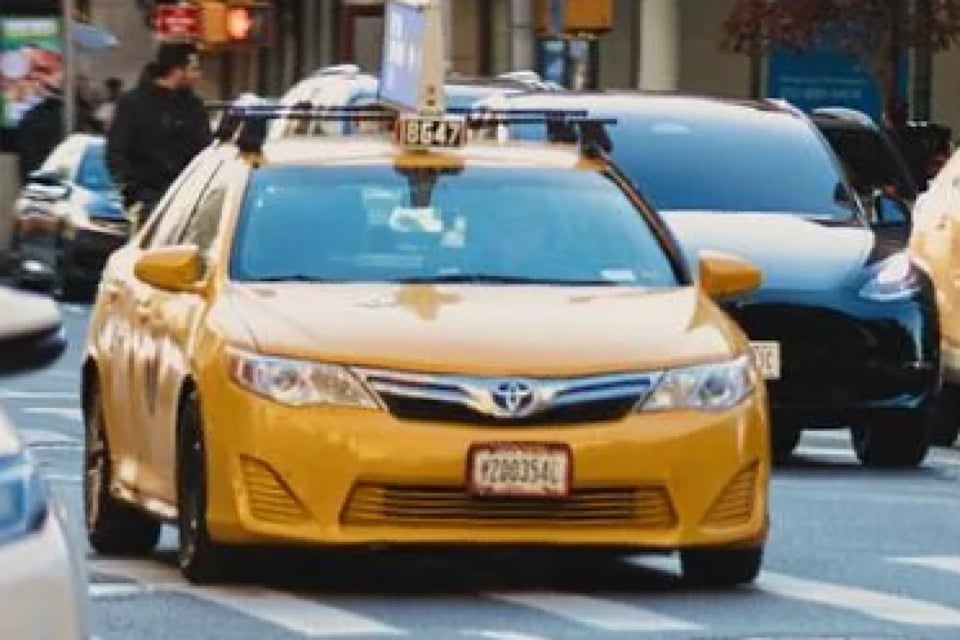
Conventional sedan-type cabs are not well suited for transporting foreigners; they are fine for two or three people, but not adequate for families or groups with a lot of luggage.
Therefore, if there is a large number of people or luggage, it may be necessary to split up into several vehicles. When arranging a cab, it is important to confirm in advance the number of people and their luggage.
Going by Taxi! 5 Recommended Japan Experiences
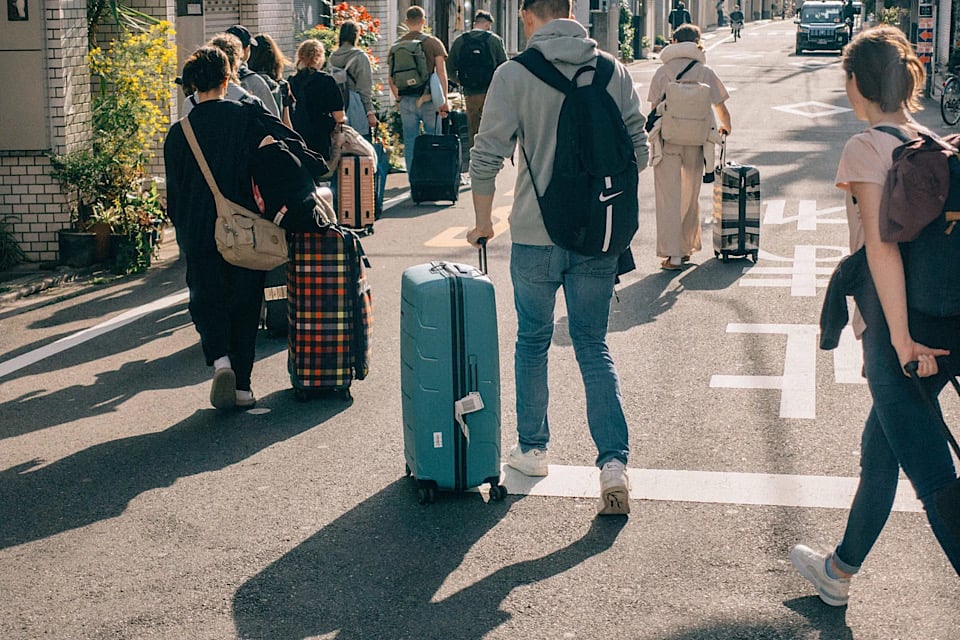
Particularly recommended is “traveling in the countryside by cab.
As Mr. D mentioned earlier, there are still many areas in rural areas where travel by car is a prerequisite, such as where trains are infrequent or buses are out of service.
Cabs can solve such concerns as “There is a place I want to go, but I can’t get there because I don’t know how to get there. ……
Especially when traveling in rural areas, it is very convenient to use cabs, which allow you to move flexibly without relying solely on public transportation.
If you are worried about transportation, please consider taking a cab.
If you are wondering where exactly to go by cab, don’t worry.
Motenas Japan proudly recommends five cab sightseeing tours.
Hiroshima Prefecture: Rabbit Island Sightseeing (2 days 1 night)

In Hiroshima Prefecture, there is an island where many rabbits live, known as “Rabbit Island.
Why don’t you spend a dreamy time surrounded by cute rabbits?
We can plan a tour that efficiently visits not only Usagi Island but also other sightseeing spots in Hiroshima Prefecture by cab.
For example, how about a tour like this?
Rabbit Island Sightseeing (2 days 1 night) Model Course
Day 1
| Hours. | Activities | supplement |
|---|---|---|
| 7:00 | Departure from Tokyo Station (using Shinkansen Nozomi) | – |
| 11:30 | Arrive at Hiroshima Station and transfer by private cab to Chuhai Port | – |
| 12:45 | Departure from Chuhai Port Ferry → Okuno Island | – |
| 1:00 p.m. – 5:30 p.m. | Walking around Rabbit Island, visit to observatory, etc. | – |
| 18:00 | Check-in and dinner at Vacation Village Okunojima | – |
2nd day
| Hours. | Activities | supplement |
|---|---|---|
| 8:30 | Check out of the vacation village and take a ferry to Chuhai Port. | – |
| 9:00 | Take a private cab to Hiroshima Castle | – |
| 10:15-11:15 | Tour of Hiroshima Castle | – |
| 11:30-12:15 | lunch | Hiroshima-style okonomiyaki is recommended. |
| 12:15 | Transfer to Miyajima-guchi by private cab | – |
| 13:00 | Ferry to Miyajima | – |
| 13:15-15:00 | Sightseeing at Miyajima and Itsukushima Shrine, interaction with deer, etc. | If you don’t have time, you can shorten your stay. |
| 15:30 | Departure from Miyajima-guchi → Hiroshima Station (private cab or JR) | – |
| 16:15 | Departure from Hiroshima Station (Shinkansen Nozomi) | – |
| Around 20:45 | Arrival at Tokyo Station | Due to the late arrival time, purchasing a station lunch is recommended. |
Yamanashi Prefecture: Leisurely one-day tour of Mt.
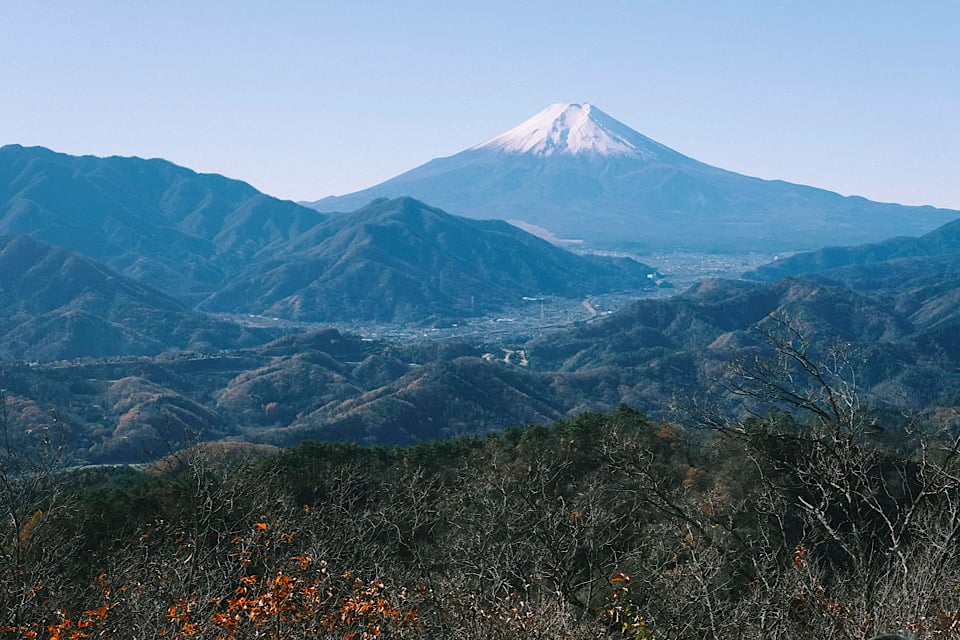
When we think of Japan, we think of Mt. Fuji is beautiful but hard to climb. Please don’t worry. Fuji can be fully enjoyed without climbing it.
We can also plan tours that allow you to leisurely stroll around the surrounding sightseeing spots while enjoying the beautiful view of Mt. For example, how about a tour like this?
This tour is safe and enjoyable for children and the elderly.
Model Course for a relaxing one-day tour of Mt.
| Hours. | Activities | supplement |
|---|---|---|
| 8:00 | Departure from Tokyo Station (Shinkansen Hikari or Kodama) | – |
| 9:10 | Arrive at Shin-Fuji Station and take a private cab to Mt. | – |
| 9:45-10:30 | Fuji Hongu Sengen-taisha Stroll and visit | Fuji from the precincts of the temple. Fuji from the temple grounds. Visit in the morning when there are fewer people to enjoy the view. |
| 10:30 | Departure for Kawaguchiko (by private cab) | About 1 hour. Fuji drive view on the way. |
| 11:30-12:30 | Stroll around Kawaguchiko and take a break at a café | You can relax and enjoy the spectacular view of the lakeside. |
| 12:30-13:30 | lunch | Fujiyoshida Udon noodles OR local cuisine is recommended. |
| 13:30-14:30 | Oshinohakkai Sightseeing | – |
| 14:30 | Departure to Shin-Fuji Station (private cab) | – |
| 15:30-15:45 | Arrival at Shin-Fuji Station, short break | – |
| 16:00 | Depart from Shin-Fuji Station → Tokyo Station (Shinkansen) | The tour can be dismissed before 6:00 p.m. |
Hyogo Prefecture: Kobe Luxury Tour (day trip)
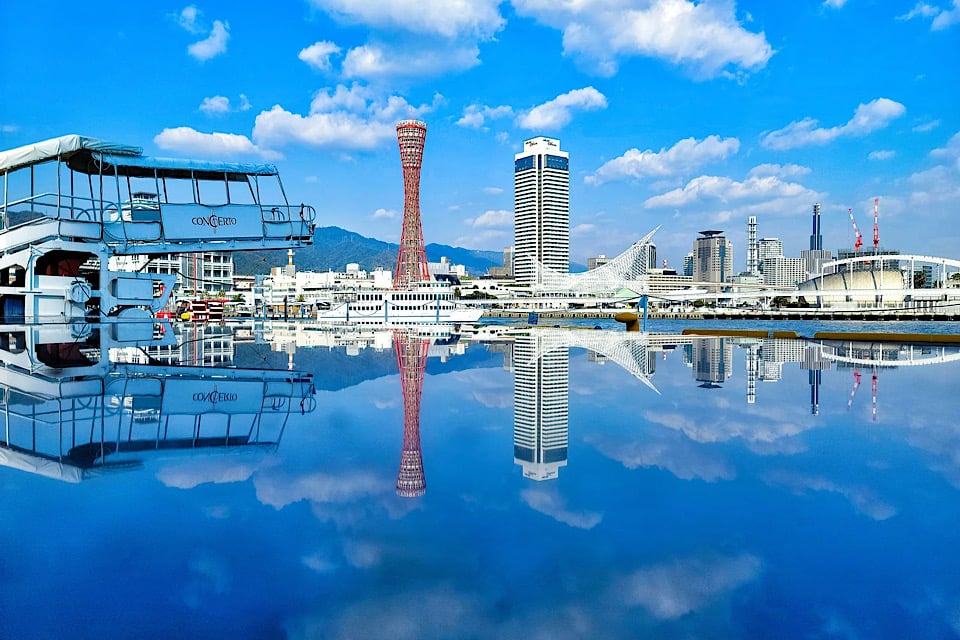
There are many sights to see in Kobe. Ijinkan and Nankinmachi, the night view of the port and the mountain scenery – all of them are sightseeing spots that should not be missed, but the tourist spots on the mountain side and the sea side are quite far apart at about 4 km. However, the distance between the mountain side and the sea side of the city is about 4 km, and there are many transfers by public transportation, so it is not easy to get around efficiently.
However, you can solve all these problems by using a dedicated cab. You can go directly to your destination without the stress of transfers and without worrying about your luggage – a comfortable sightseeing experience.
This time, I was born in Kobe and can plan a tour that allows you to enjoy all the major sightseeing spots in Kobe in one day. For example, how about this tour:
This is a perfect plan for those who want to visit Kobe in one day and spend the rest of the day sightseeing in Osaka and Kyoto.
Kobe Luxury Tour (Day Trip) Model Course
| Hours. | Activities | supplement |
|---|---|---|
| 8:30-10:30 | Kobe Nunobiki Herb Garden & Ropeway Stroll through the beautiful flower garden overlooking the city of Kobe and the sea. | All transportation will be by private cab. |
| 11:00-12:30 | Kitano Ijinkan-gai Strolling & Photography Strolling through the exotic streets Enjoy fashionable cafes and general stores | If you can afford it, I recommend visiting the Starbucks Kobe Kitano Ijinkan store near Ijinkan. It is sure to be a photo-story! |
| 12:45 – 14:00 | Chinese Lunch & Eating in Nanjing Town | – |
| 14:15-16:00 | Kobe Harborland Mosaic area Enjoy shopping and cafe time while feeling the sea breeze in the bay area | There is a giant Ferris wheel nearby, so if you have time, I recommend you to go there too. You can see the whole view of Kobe. |
| 16:30-18:30 | Free time & rest (nearby cafes, walking, etc.) Pick up souvenirs, take a break at a café, or enjoy the aftermath of sightseeing. | At Starbucks Kobe Meriken Park, you can enjoy a cup of coffee while gazing at the beautiful ocean. |
| 19:00 – 20:30 | Kobe Beef Dinner | Advance reservations recommended for popular restaurants “Kobe Steak Masashi” and “Mouriya Honten”. |
| 21:00 | Dismissal at Kobe Station | Pick-up and drop-off at your hotel is available upon request. |
Kyoto Prefecture: Kyoto Luxury Tour + Maiko-san Tour (One-day Tour)
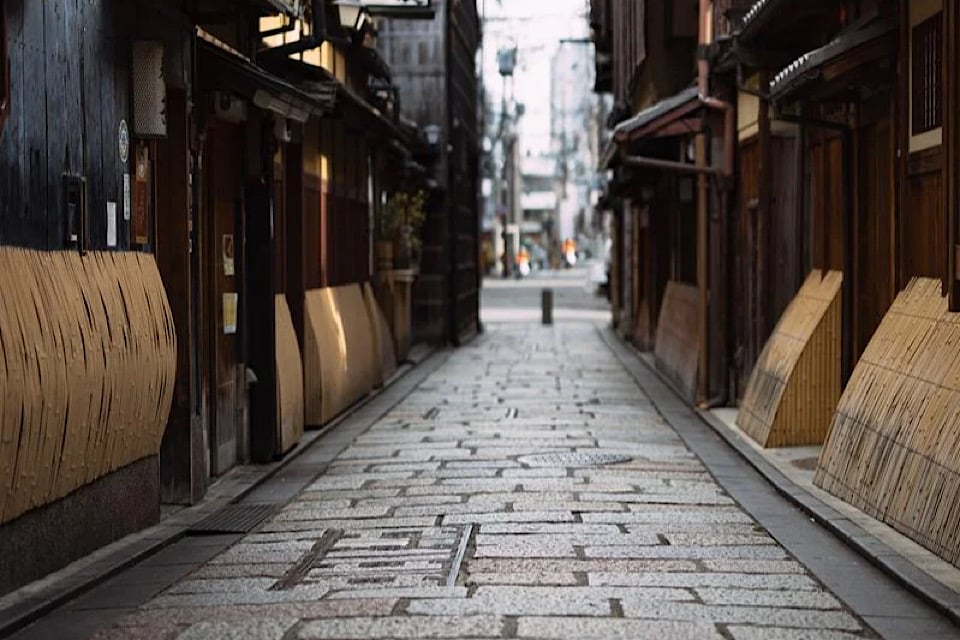
Buses and trains are the most common means of transportation for sightseeing in Kyoto.
However, because Kyoto is a popular tourist destination, buses are always crowded and getting on and off can be a challenge. Also, trains have more than eight major lines, and many people say that changing trains is complicated and easy to get lost.
In such cases, we recommend a dedicated cab. With a dedicated cab, you can solve all these transportation problems.
You can visit tourist attractions efficiently and have a highly satisfying trip even within a limited time.
In just one day, you may become a “Kyoto connoisseur” who knows all about Kyoto’s sightseeing spots.
We can also organize tours using dedicated cabs.
Kyoto Luxury Tour + Maiko-san Tour (One-day Tour) Model Course
| Hours. | Activities | supplement |
|---|---|---|
| 8:00 | Meet at Kyoto Station and depart | It is a good idea to reconfirm your schedule at this point since you will be using a dedicated cab for the day. |
| 8:30 – 9:30 a.m. | Kiyomizu Temple | – |
| 9:45-10:30 | Gion, Yasaka Shrine Stroll | – |
| 10:45-11:45 | Kinkakuji Temple (Rokuonji Temple) | If you have a chance, try to take a picture of the “upside-down Golden Pavilion” reflected in the water. It is sure to be reflected on Instagram. |
| 12:00-13:00 | Lunch in Arashiyama | We recommend keeping it light here for dinner. |
| 13:30-14:30 | Arashiyama, Bamboo grove path and Togetsu Bridge | – |
| 15:00-16:00 | Fushimi Inari-taisha Shrine (Senbon-torii) | Be careful not to go further and further along the Senbon-torii gate, or you will wander off into the mountains. It is safe to warn people not to go too far back. |
| 17:00 – 20:00 | Dinner with Maiko on a houseboat | – |
| 20:30 | Dismissal at Kyoto Station | Pick-up and drop-off at your hotel is available upon request. |
This course is designed as a plan that incorporates an experience in Motenas Japan. This course can be planned as a plan that incorporates experiences If you are interested, please refer to this article as well.
If you are interested, please refer to this article as well.

Kagoshima Prefecture: Peace of Mind! First trip to the countryside (3 days/2 nights)
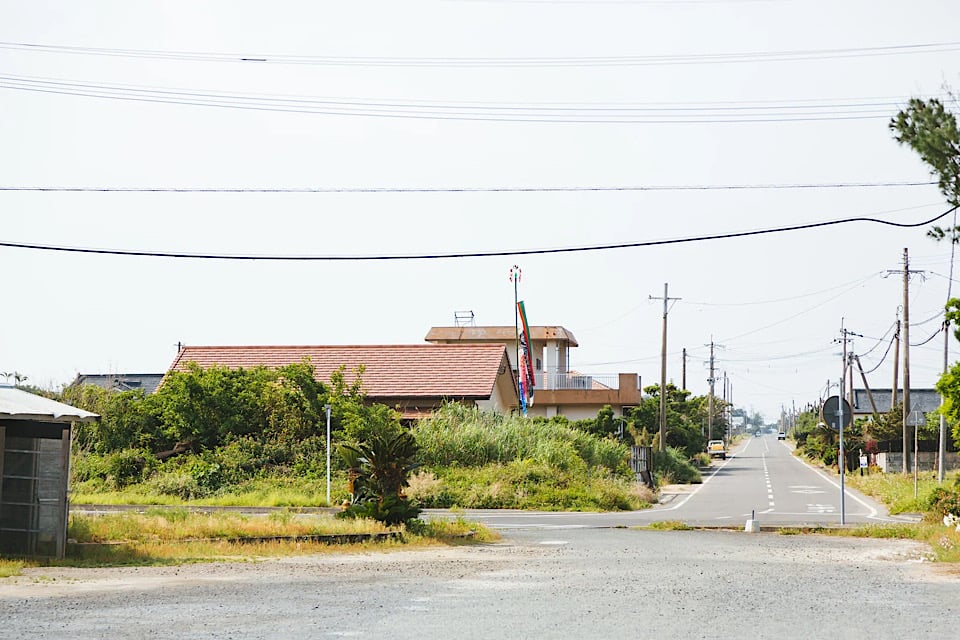
Famous tourist spots are great, but if you have come all the way to Japan, why not have a special experience unlike any other?
Kagoshima Prefecture has everything you could dream of: spectacular nature, natural hot springs, and delicious food.
Kagoshima is not crowded with tourists, so you can enjoy sightseeing in a relaxed atmosphere. However, Kagoshima Prefecture is a bit of a bottleneck in terms of transportation: …….
That is why you should use a special cab to enjoy a comfortable trip. We can also plan a safe tour for those who have never traveled to the countryside before.
[Safety! Model course for a first trip to the countryside (3 days/2 nights)]
Day 1
| Hours. | Activities | supplement |
|---|---|---|
| 8:30 | Tokyo (Haneda) → Kagoshima Airport (by Air) | Flight time: approx. 1 hr. 50 min. |
| 10:30 | Transfer from Kagoshima Airport to Kagoshima City by private cab | We recommend that you purchase a Transportation Pass CUTE at Kagoshima Airport. With this pass, you can take the ferry and city sightseeing buses as many times as you like. |
| 11:30 | Transfer to Kagoshima Port | Lunch on the way is recommended. |
| 12:15 | Take a ferry to Sakurajima (about 15 minutes) | Conveniently operates every 15 minutes. |
| 12:45 – 16:30 | Sakurajima sightseeing (Yunodaira Observatory, Kurokami Buried Torii, Lava Nagisa Walkway, etc.) | Use CUTE purchased at Kagoshima Airport. |
| 17:00 | Return to Kagoshima City by ferry | – |
| 18:00 | Check-in and dinner at a hotel in Kagoshima City | For dinner, local restaurants around the Temmonkan area are recommended. |
2nd day
| Hours. | Activities | supplement |
|---|---|---|
| 8:00 | Departure from Hotel | We recommend that you use a dedicated cab to get around Kirishima. |
| 9:30-11:00 | Kirishima Jingu Shrine visit | – |
| 11:30-13:00 | Sightseeing around Kirishima Onsenkyo | – |
| 13:00-14:00 | Lunch at a local restaurant | Kurobuta pork and mountain products are recommended. |
| 14:00-15:30 | Check-in at a hot spring hotel, bathing in a hot spring | We recommend Sakura Sakura Onsen. It has a rare natural mud onsen. It is reputed to make your skin smooth. |
| Evening ~. | Dinner and relaxing at the inn | – |
3rd day
| Hours. | Activities | supplement |
|---|---|---|
| 9:00 | Check out slowly after breakfast | A morning hot spring bath is also recommended. |
| 10:30 | Depart Kirishima Onsenkyo → Transfer to Kagoshima Airport (approx. 1 hour by cab) | – |
| 12:30 | Depart Kagoshima Airport → Tokyo (Haneda) (by plane) | – |
| Around 14:30 | Arrival in Tokyo and disbanding | – |
Comfortable time in Japan with a foreigner, made possible by cabs
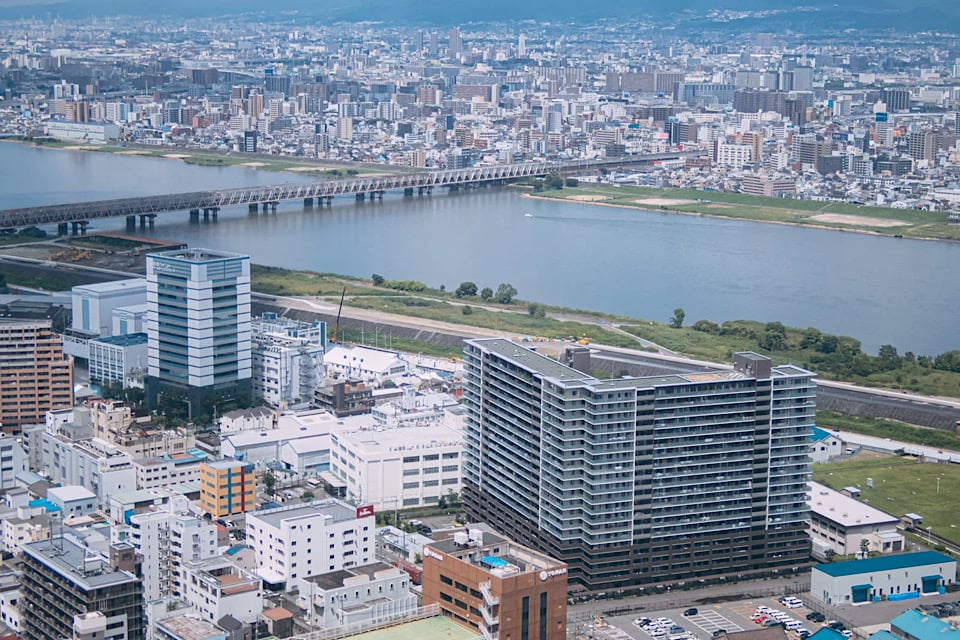
For tourists, their stay in Japan is limited to a few weeks at most.
If you have come all the way to Japan, you want to visit as many sightseeing spots and experience new places as possible in that limited time.
Cabs make such wishes come true. By eliminating the stress of transportation, foreign customers can enjoy traveling in Japan more comfortably.
As mentioned earlier in this article, Motenas Japan also offers special plans that combine “cab” and “Japan travel” services. We can also arrange interpreters and consult with you on venues, so please feel free to contact us if you would like to bring the uniqueness of Japan to your foreign guests.

After graduating from Kansai University, I joined JTB as a new graduate and worked in the inbound tourism sector.
After getting married, I moved to Australia due to my husband’s work and obtained a diploma in early childhood education there.
I am currently working at a kindergarten while also working as a writer.





